The 3 to 1 rule for guitar is something I’ve been using to teach guitarists when viewing scale patterns. It helps to open up different possibilities from the same scale and take your playing to a different level. Once you understand the 3 to 1 rule, you will forever have altered your perception on scalar geometry on the guitar fretboard.
Let us begin with the minor pentatonic scale as shown on the right. This is among the earliest things we learn on the guitar. When we advance in our learning, we usually expand this minor pentatonic scale by adding additional notes shown highlighted) to make up the minor scale. (Below right)
Some of us may have even learnt these the other way around, i.e. by learning the minor scale first then subtracting notes to derive the minor pentatonic scale.
As a result, we have all ended up associating the Minor Pentatonic with the minor scale. We might even think of the minor pentatonic scale as a light version of the minor scale.
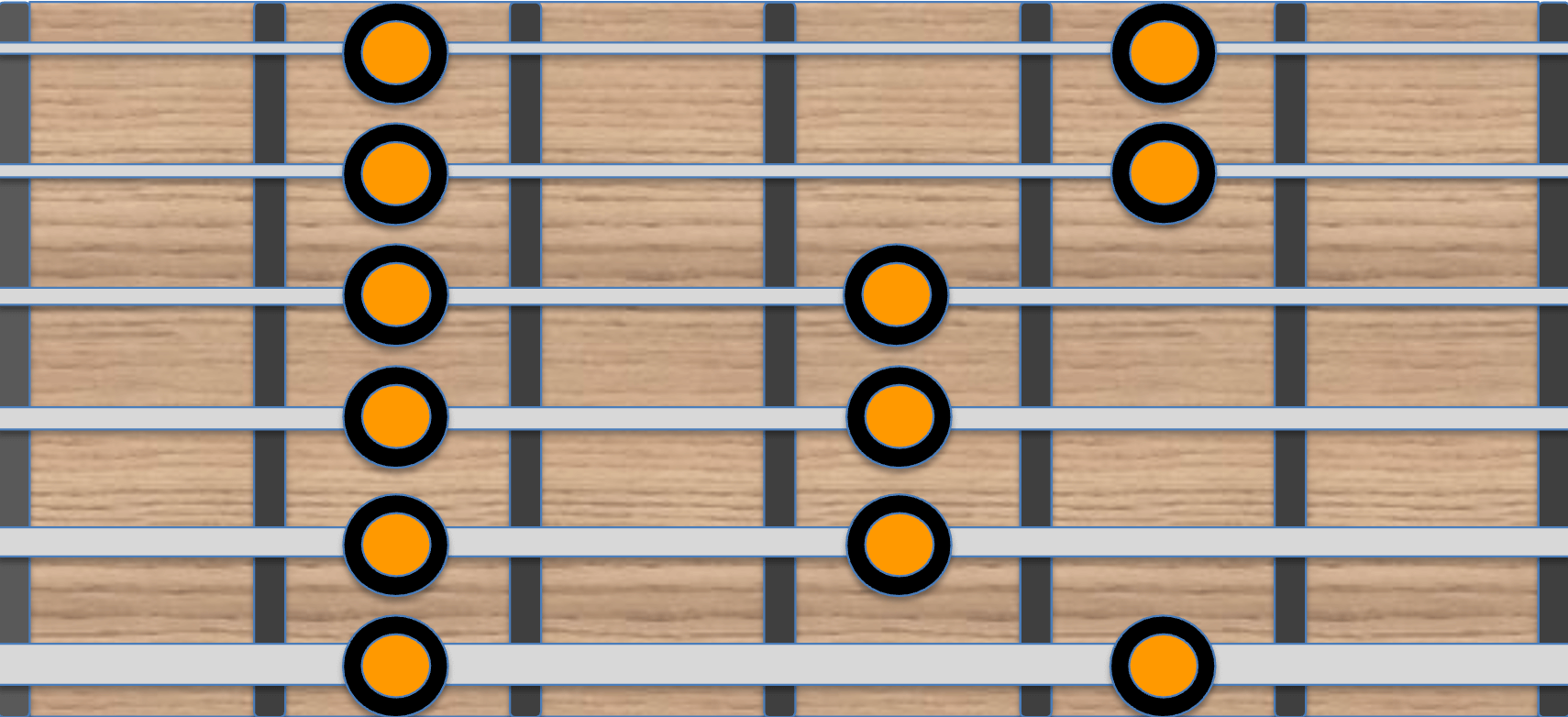
Minor Pentatonic Scale
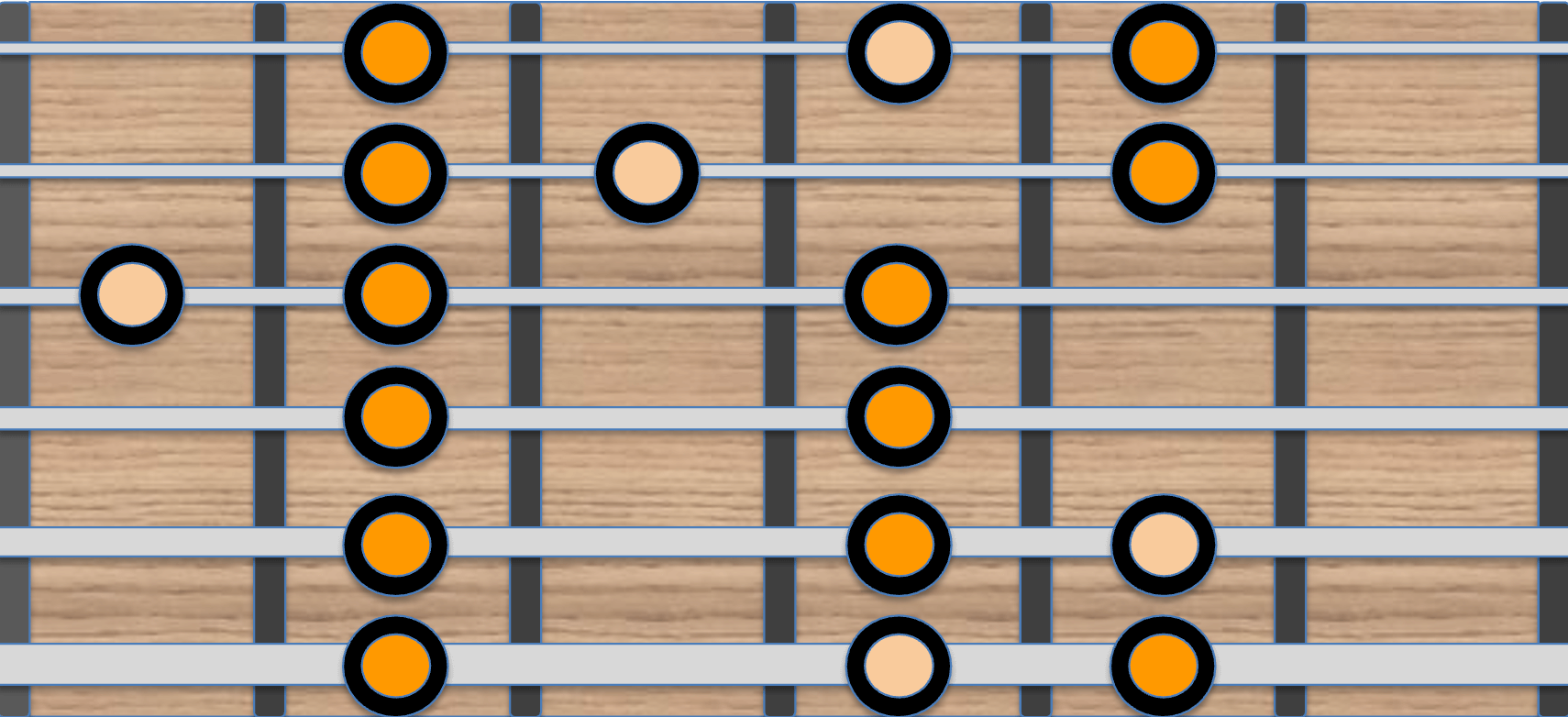
The Minor Scale
3 Pentatonic Scales to 1 Major Scale
The first aspect of the 3 to 1 Rule for guitar pertains to changing this traditional association of the minor pentatonic to the minor scale. If we were to examine the minor scale more closely, we can extract 2 other pentatonic scales from it.

The Minor Scale
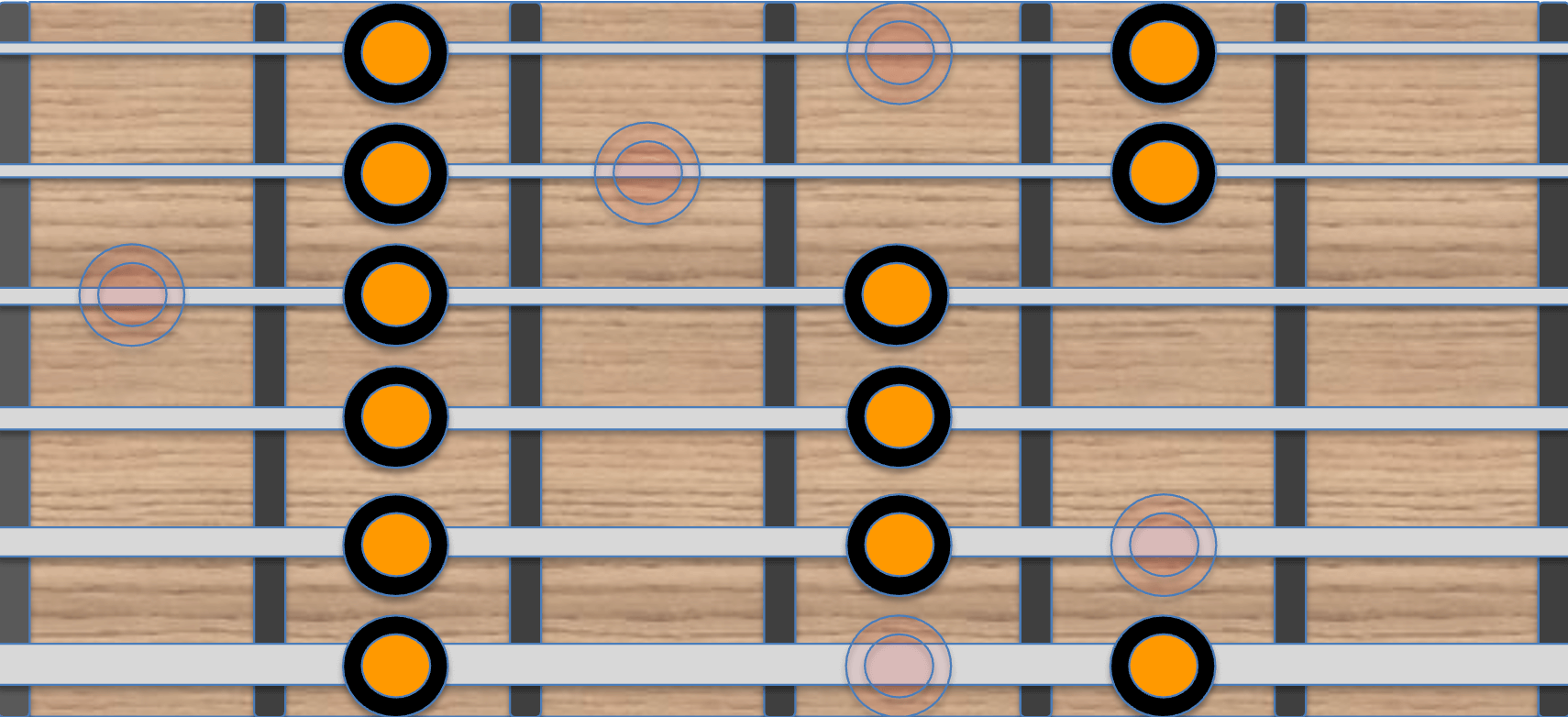
Minor Pentatonic Scale

Egyptian Scale
(also known as Form 2)
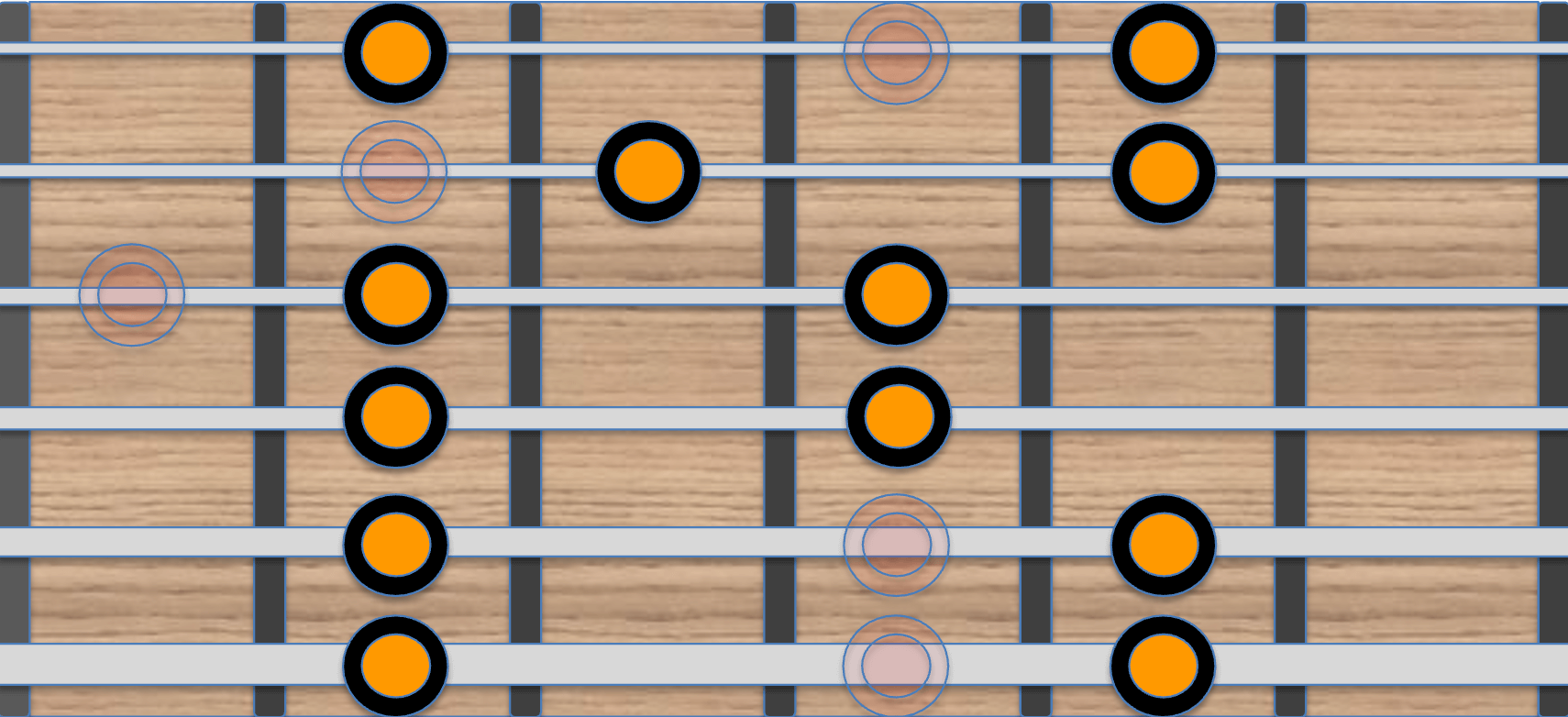
Banshiki-Cho Scale
(also known as Form 3)
These additional 2 pentatonic scales are the forms 2 and 3 of the major pentatonic scale. I have introduced them as the Egyptian Scale and the Banshiki-Cho scale respectively based on my preview article “Rethinking Pentatonics”.
Advanced players will already know this relationship and perhaps may even call it by a different name. Nonetheless, many beginner and intermediate guitar players may be unaware of this fact. We can use either of the 3 pentatonic scales over the minor scale position interchangeably since the notes are diatonic to the key. More seasoned players will use the Egyptian scale box instead of the minor pentatonic for a more modal tonality.
Every major scale box on the fretboard box will have its own 3 corresponding pentatonic scale boxes. As are all things on the guitar fretboard, these pentatonic scale relationship are transposable to any key.
3 Modes to 1 Pentatonic Scale
The next relationship in the 3 to 1 Rule for Guitar is the modal relationship between pentatonics and major scales. Simply put, for every pentatonic scale box, there are 3 major scale boxes that can be superimposed over it. For instance over the minor pentatonic, we can superimpose the minor scale (or Aeolian mode), the Dorian mode or the Phrygian mode scale fingerings. The non pentatonics notes are shown below in translucent black.

Minor Pentatonic Scale

Aeolian Mode Superimposed
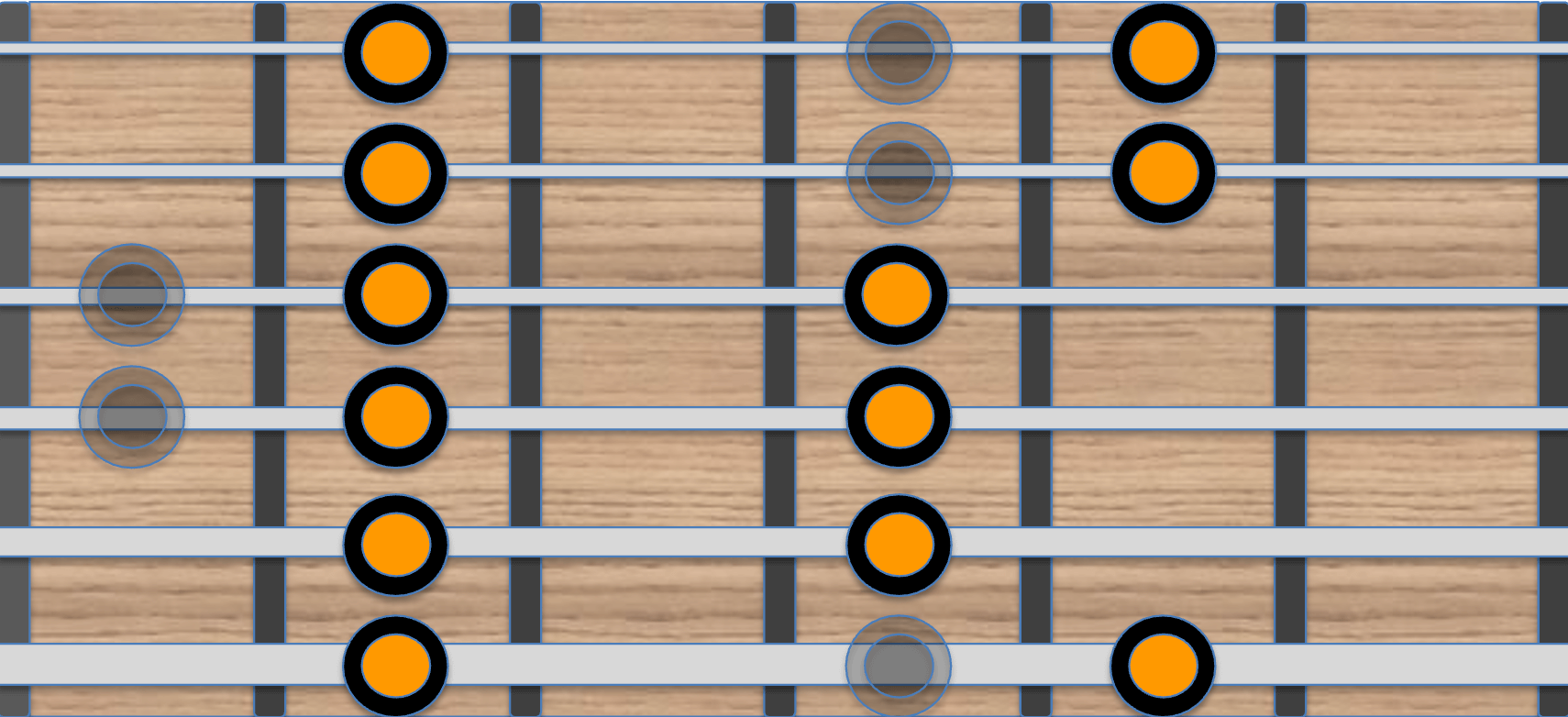
Dorian Mode Superimposed

Phrygian Mode Superimposed
Looking closely at all 3 scales, we can clearly see the minor pentatonic sitting perfectly within the major scale boxes. I have found this approach more palatable for most guitarists particularly those who do not have a strong grasp of music theory particularly on modes. In any case, this approach is meant to provide you with the adequate mechanics so that you can begin using the substitutions without the burden of theory, which we can tackle in a later article.
3 to 1 Rule for the CAGED System
An interesting application of the 3 to 1 Rule for Guitar is on the CAGED System and the beginning stages of chord tone soloing. Let us tackle the former first.
When learning the CAGED system, we have the following chord diagrams all of which are ways to play the C chord triad.
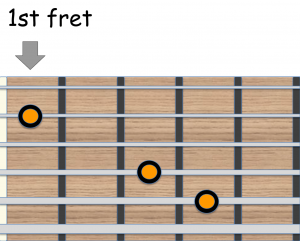
C Shape

A Shape

G Shape
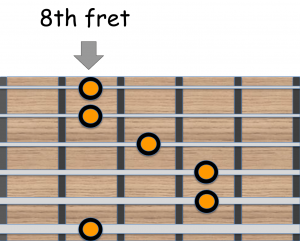
E Shape

D Shape
When we progress beyond the chords stage of the CAGED system, the natural progression is to integrate scales. For instance the G shape is always associated with the minor pentatonic scale as shown on the right.
The black notes are added to the G shape to complete the minor pentatonic scale box. Clearly the G shape fits perfectly in the minor pentatonic structure.
Similarly, if we add the minor scale into the mix, we also tend to associate the G Shape with the A minor scale box. (See image right).
Clearly the G Shape fits perfectly over the minor scale as shown.

G Shape over minor pentatonic

G Shape over minor scale
Let us examine the minor scale box specifically the A minor scale. If we look closer, we can actually see that the the minor scale box also contains the C shape and the D shapes.

G Shape over A minor scale
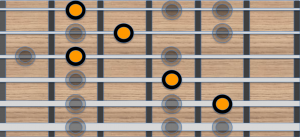
C Shape over A minor scale
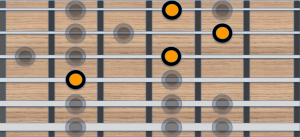
D Shape over A minor scale
Evidently, the only CAGED shapes that can fit the minor scale box are the G shape, the C shape, and the D shape.
The G shape is the C chord triad but in this key of C, the C shape here is the F triad and the D shape is the G triad. So C, F, and G triads make the I, IV, and V chords of the key of C major.
In short, each major scale box will contain 3 CAGED shapes and they will always be the I, IV, and V of the key. Since there are 5 major scale boxes in one octave on the fretboard, these essentially are the same I, IV, and V chord of the key but played at different locations.
Lastly, while this may not be the way the CAGED system is usually taught, the real significance of this is it leads to the foundations of chord tone soloing.
